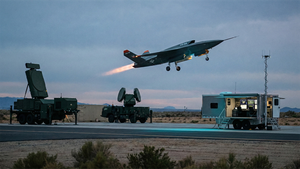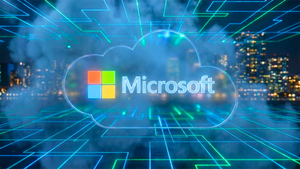Tax season is, well, taxing for a number of reasons. You might be scrambling to gather your financial statements, make sense of any changes to the tax code, and stay on top of new deductions and credits.
And if you're a freelancer or side hustler, filing your tax returns can prove to be a jumble of confusion and added complexity. No need to despair. To help you best prep for your taxes, myFICO presents a few of our favorite tax experts on their favorite tips:
For more loan and credit education, visit myFICO’s blog at https://www.myfico.com/credit-education/blog
Get an early jump on your financial documents. It's never too early to get started on gathering your income and expense records, points out Helena Swyter, a CPA and founder of the Chicago-based tax services and consulting firm SweeterCPA.
While the information and financial docs you need depends on your particular situation, it might include:
- Financial information for your business (profit and balance sheets, business expense and income reports, financial statements)
- Income forms such as 1099-NEC, 1099-MISC and 1099-K
- Mileage for business-related travel
- Retirement contribution statements
- HSA contribution statements
- Tax forms for health insurance premiums (i.e.,1095-C Form)
- Tax forms for income earned from other sources (i.e., investments, interest from bank accounts)
An FYI: tax documents that are commonly received by freelancers—think the Forms 1099-NEC and 1099-MISC–will start to come in January and February, so be sure to keep them stowed away in a safe place until you're ready to do your taxes, recommends Swyter.
For extra safekeeping, consider scanning physical copies and keeping a digital vault on your computer.
Stay on top of your financial housekeeping
"The most common reason I find that expenses are omitted from a tax return is because the freelancer forgot about them," says Swyter. In busy times, it’s easy to misplace a receipt or forget about recording an expense.
It’s more upkeep but a couple of basic things can help you capture your expenses accurately—which can help you save on taxes and get a larger refund.
First, keep a separate bank account and credit card for your business. And make it a point to keep all business-related expenses flowing through those accounts.
Second, have a bookkeeping system in place to keep track of your expenses and income automatically. Besides using an accounting platform such as QuickBooks, FreshBooks, Xero, and Zoho, to name a few, see what you can do to automate tracking what comes into your business and what goes out.
Save your receipts
It can be far too easy to forget, but aim to save receipts for any business-related expenses. This might be anything from car maintenance and repair (if applicable), meals for business purposes, and office supplies.
If you forget to snap a photo or scan your receipts, or tuck physical copies away, you can look at your bank and credit card statements.
Remember: for you to get a tax break on a certain expense, the expense needs to be ordinary and necessary. To break it down even more, an ordinary expense needs to be something that's standard in your industry and line or work. As for the necessary part, it needs to be an expense you need to run your business as a freelancer, or to do your job as a side hustler.
Stay on top of quarterly estimated tax payments
Another added financial responsibility that freelancers have is estimated tax payments. People who work a W-2 job will see that taxes—federal, state, and local, if applicable—are withheld from their paychecks each time they are paid, explains Swyter. These amounts are tracked on paystubs and sent in to the relevant taxing agencies by their employer. And throughout the year, as they earn money, taxes are handled without further action from them.
"But for freelancers, this situation is different," says Swyter. "No one is making tax payments on their behalf, so they need to consciously set aside money for taxes and make payments throughout the year to avoid an unpleasant tax bill when annual returns are prepared."
"Taxes must be paid as you earn or receive income during the year, either through withholding or estimated tax payments," adds Moira Corcoran, a Chicago-based CPA and JustAnswer tax and finance expert. "Freelancers have to pay estimated payments since they don't have withholdings," she says. "Individuals and S-corporations generally use Form 1040-ES to calculate their estimated tax."
While the amount you owe hinges on a handful of factors, a general rule of thumb is to set aside anywhere from 25% to 50% of your earnings for taxes. It might seem a lot, and chances are deductions and credits will lower your tax bill. But it's better to err on the side of caution and have more than not enough.
Maintain an accurate mileage log for 2022
If you're a self-employed freelancer or side hustler who uses a personal vehicle for business purposes, the good news is that you may qualify to use the standard mileage rate to determine a deduction, explains Swyster.
"Typically, the standard mileage rate for the year is announced by the IRS and remains constant throughout the year in question," she says. "In 2022, however, the rate increased mid-year, from 58.5 cents per mile for trips between January 1 and June 30 to 62.5 cents per mile for the remainder of the year." The reason? To reflect the increase in fuel prices.
It's a tad confusing. But essentially, the change in rate starts on July 1st, 2022. So, you'll need to know whether a trip occurred before June 30th or on or after July 1st in 2022 to accurately calculate your mileage deduction.
Prepare for changes in 2023
Recently, the IRS announced a new update to reporting requirements for third-party settlement organizations. In other words, if you had any business transactions through payment platforms such as PayPal, Stripe, and Venmo, that are over $600 a year, you'll be required to report those earnings on your tax return. This is different from the previous rules, where you had to report if you had more than 200 business transactions per year that resulted in a total of at least $20,000.
So, for your 2022 taxes, you won't have to worry about reporting this unless you had at least $20,000 from over 200 transactions.
The Form 1099-K reports payments from payment processors, most commonly those from credit card companies and PayPal, explains Swyter. "Freelancers who accept payments from clients and customers via credit card may already be familiar with receiving these forms," she says.
The threshold for issuing 1099-Ks was scheduled to be dropped to $600 for 2022, but we got some last-minute relief from the IRS and now that’s a concern for the 2023 tax year instead. This means that individuals who sell items on Facebook Marketplace and eBay – people who don’t consider themselves as running a business – may start to receive Forms 1099-K in early 2024 to report transactions in 2023.
"While we anticipate more guidance from the IRS before that goes into effect, the best advice for all sellers would be to keep records of the original cost of all items sold and other related expenses such as shipping materials and the cost of postage to offset any income received," says Swyter.
Filing your tax return when you're a freelancer or side hustle does come with its own set of challenges and complexities. But staying on top of any changes and taking the time to prepare will make for a smooth and stress-free tax season.
About myFICO
Get your FICO® Score from the people that make the FICO Scores, for free. Plus, free Equifax credit monitoring and a free Equifax credit report every month. No credit card required. For more information, visit https://www.myfico.com/products/fico-free-plan-a
View source version on businesswire.com: https://www.businesswire.com/news/home/20230228005140/en/
Contacts
myFICO Contact:
Elizabeth Warren
ElizabethWarren@fico.com





